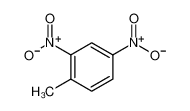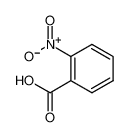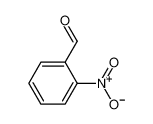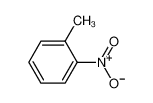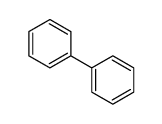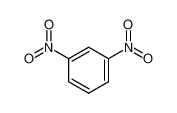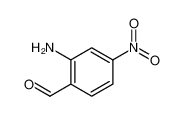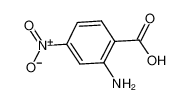1.Identification
1.1 GHS Product identifier
| Product name | 2,4-dinitrotoluene |
|---|
1.2 Other means of identification
| Product number | - |
|---|---|
| Other names | 2,4-Dinitropyridin |
1.3 Recommended use of the chemical and restrictions on use
| Identified uses | For industry use only. The predominant use of 2,4-dinitrotoluene is as an intermediate in the manufacture of polyurethanes. 2,4-Dinitrotoluene is also used for the production of explosives, for which it is a gelatinizing and waterproofing agent. Other applications include uses as an intermediate in dye processes and in smokeless gunpowders. |
|---|---|
| Uses advised against | no data available |
1.4 Supplier's details
| Company | MOLBASE (Shanghai) Biotechnology Co., Ltd. |
|---|---|
| Address | Floor 4 & 5, Building 12, No. 1001 North Qinzhou Road, Xuhui District, Shanghai, China |
| Telephone | +86(21)64956998 |
| Fax | +86(21)54365166 |
1.5 Emergency phone number
| Emergency phone number | +86-400-6021-666 |
|---|---|
| Service hours | Monday to Friday, 9am-5pm (Standard time zone: UTC/GMT +8 hours). |
2.Hazard identification
2.1 Classification of the substance or mixture
Acute toxicity - Oral, Category 3
Acute toxicity - Dermal, Category 3
Acute toxicity - Inhalation, Category 3
Germ cell mutagenicity, Category 2
Carcinogenicity, Category 1B
Specific target organ toxicity – repeated exposure, Category 2
Hazardous to the aquatic environment, short-term (Acute) - Category Acute 1
Hazardous to the aquatic environment, long-term (Chronic) - Category Chronic 1
Reproductive toxicity, Category 2
2.2 GHS label elements, including precautionary statements
| Pictogram(s) |    |
|---|---|
| Signal word | Danger |
| Hazard statement(s) | H301 Toxic if swallowed H311 Toxic in contact with skin H331 Toxic if inhaled H341 Suspected of causing genetic defects H350 May cause cancer H373 May cause damage to organs through prolonged or repeated exposure H410 Very toxic to aquatic life with long lasting effects H361f |
| Precautionary statement(s) | |
| Prevention | P264 Wash ... thoroughly after handling. P270 Do not eat, drink or smoke when using this product. P280 Wear protective gloves/protective clothing/eye protection/face protection. P261 Avoid breathing dust/fume/gas/mist/vapours/spray. P271 Use only outdoors or in a well-ventilated area. P201 Obtain special instructions before use. P202 Do not handle until all safety precautions have been read and understood. P260 Do not breathe dust/fume/gas/mist/vapours/spray. P273 Avoid release to the environment. |
| Response | P301+P310 IF SWALLOWED: Immediately call a POISON CENTER/doctor/… P321 Specific treatment (see ... on this label). P330 Rinse mouth. P302+P352 IF ON SKIN: Wash with plenty of water/... P312 Call a POISON CENTER/doctor/…if you feel unwell. P361+P364 Take off immediately all contaminated clothing and wash it before reuse. P304+P340 IF INHALED: Remove person to fresh air and keep comfortable for breathing. P311 Call a POISON CENTER/doctor/… P308+P313 IF exposed or concerned: Get medical advice/ attention. P314 Get medical advice/attention if you feel unwell. P391 Collect spillage. |
| Storage | P405 Store locked up. P403+P233 Store in a well-ventilated place. Keep container tightly closed. |
| Disposal | P501 Dispose of contents/container to ... |
2.3 Other hazards which do not result in classification
none
3.Composition/information on ingredients
3.1 Substances
| Chemical name | Common names and synonyms | CAS number | EC number | Concentration |
|---|---|---|---|---|
| 2,4-dinitrotoluene | 2,4-dinitrotoluene | 121-14-2 | none | 100% |
4.First-aid measures
4.1 Description of necessary first-aid measures
General advice
Consult a physician. Show this safety data sheet to the doctor in attendance.
If inhaled
Fresh air, rest. Artificial respiration may be needed. Refer for medical attention.
In case of skin contact
Remove contaminated clothes. Rinse and then wash skin with water and soap. Refer for medical attention .
In case of eye contact
First rinse with plenty of water for several minutes (remove contact lenses if easily possible), then refer for medical attention.
If swallowed
Rinse mouth. Give one or two glasses of water to drink. Refer for medical attention .
4.2 Most important symptoms/effects, acute and delayed
Excerpt from ERG Guide 152 [Substances - Toxic (Combustible)]: Highly toxic, may be fatal if inhaled, swallowed or absorbed through skin. Contact with molten substance may cause severe burns to skin and eyes. Avoid any skin contact. Effects of contact or inhalation may be delayed. Fire may produce irritating, corrosive and/or toxic gases. Runoff from fire control or dilution water may be corrosive and/or toxic and cause pollution. (ERG, 2016)
Ingestion or overexposure to vapors from hot liquid can cause loss of color, nausea, headache, dizziness, drowsiness, collapse. Hot liquid can burn eyes and skin. Prolonged skin contact with solid can give same symptoms as after inhalation or ingestion. (USCG, 1999)
4.3 Indication of immediate medical attention and special treatment needed, if necessary
In case of ingestion, induction of emesis is not recommended because of the potential for central nervous system depression. Gastric lavage and administration of activated charcoal may be considered soon after ingestion, provided airways are protected. /Dinitrotoluene/
5.Fire-fighting measures
5.1 Extinguishing media
Suitable extinguishing media
WATER, DRY CHEMICAL, OR CARBON DIOXIDE FROM PROTECTED LOCATION.
5.2 Specific hazards arising from the chemical
Excerpt from ERG Guide 152 [Substances - Toxic (Combustible)]: Combustible material: may burn but does not ignite readily. Containers may explode when heated. Runoff may pollute waterways. Substance may be transported in a molten form. (ERG, 2016)
Special Hazards of Combustion Products: Nitrogen oxides and dense black smoke are produced in a fire. Behavior in Fire: Decomposition is self- sustaining at 280°C. Containers may explode in a fire. (USCG, 1999)
5.3 Special protective actions for fire-fighters
Wear self-contained breathing apparatus for firefighting if necessary.
6.Accidental release measures
6.1 Personal precautions, protective equipment and emergency procedures
Use personal protective equipment. Avoid dust formation. Avoid breathing vapours, mist or gas. Ensure adequate ventilation. Evacuate personnel to safe areas. Avoid breathing dust. For personal protection see section 8.
6.2 Environmental precautions
Consult an expert! Personal protection: chemical protection suit including self-contained breathing apparatus. Do NOT let this chemical enter the environment. Sweep spilled substance into covered containers. If appropriate, moisten first to prevent dusting. Carefully collect remainder. Then store and dispose of according to local regulations.
6.3 Methods and materials for containment and cleaning up
1) REMOVE ALL IGNITION SOURCES. 2) VENTILATE AREA OF SPILL. 3) FOR SMALL QUANTITIES, SWEEP ONTO PAPER OR OTHER SUITABLE MATERIAL & BURN IN SUITABLE COMBUSTION CHAMBER WHICH ALLOWS BURNING IN UNCONFINED CONDITION & IS EQUIPPED WITH APPROPRIATE EFFLUENT GAS CLEANING DEVICE. LARGE QUANTITIES MAY BE RECLAIMED; ... IF ... NOT PRACTICAL, DISSOLVE IN FUEL OIL & ATOMIZE IN SUITABLE COMBUSTION CHAMBER EQUIPPED WITH APPROPRIATE EFFLUENT GAS CLEANING DEVICE.
7.Handling and storage
7.1 Precautions for safe handling
Avoid contact with skin and eyes. Avoid formation of dust and aerosols. Avoid exposure - obtain special instructions before use.Provide appropriate exhaust ventilation at places where dust is formed. For precautions see section 2.2.
7.2 Conditions for safe storage, including any incompatibilities
Fireproof. Separated from strong bases, food and feedstuffs, oxidants and strong reducing agents. Well closed. Keep in a well-ventilated room. Store in an area without drain or sewer access.PRECAUTIONS FOR "CARCINOGENS": Storage site should be as close as practical to lab in which carcinogens are to be used, so that only small quantities required for ... expt need to be carried. Carcinogens should be kept in only one section of cupboard, an explosion-proof refrigerator or freezer (depending on chemicophysical properties ...) that bears appropriate label. An inventory ... should be kept, showing quantity of carcinogen & date it was acquired ... Facilities for dispensing ... should be contiguous to storage area. /Chemical Carcinogens/
8.Exposure controls/personal protection
8.1 Control parameters
Occupational Exposure limit values
NIOSH considers dinitrotoluene to be a potential occupational carcinogen. /Dinitrotoluene/
NIOSH usually recommends that occupational exposures to carcinogens be limited to the lowest feasible concentration. /Dinitrotoluene/
Recommended Exposure Limit: 10 Hour Time-Weighted Average: 1.5 mg/cu m, skin. /Dinitrotoluene/
Biological limit values
no data available
8.2 Appropriate engineering controls
Handle in accordance with good industrial hygiene and safety practice. Wash hands before breaks and at the end of workday.
8.3 Individual protection measures, such as personal protective equipment (PPE)
Eye/face protection
Safety glasses with side-shields conforming to EN166. Use equipment for eye protection tested and approved under appropriate government standards such as NIOSH (US) or EN 166(EU).
Skin protection
Wear impervious clothing. The type of protective equipment must be selected according to the concentration and amount of the dangerous substance at the specific workplace. Handle with gloves. Gloves must be inspected prior to use. Use proper glove removal technique(without touching glove's outer surface) to avoid skin contact with this product. Dispose of contaminated gloves after use in accordance with applicable laws and good laboratory practices. Wash and dry hands. The selected protective gloves have to satisfy the specifications of EU Directive 89/686/EEC and the standard EN 374 derived from it.
Respiratory protection
Wear dust mask when handling large quantities.
Thermal hazards
no data available
9.Physical and chemical properties
| Physical state | solidifies if allowed to cool |
|---|---|
| Colour | Yellow needles or monoclinic prisms |
| Odour | SLIGHT ODOR |
| Melting point/ freezing point | 65.5-70.5ºC |
| Boiling point or initial boiling point and boiling range | 300ºC |
| Flammability | Combustible Solid, but difficult to ignite.Combustible. Gives off irritating or toxic fumes (or gases) in a fire. |
| Lower and upper explosion limit / flammability limit | no data available |
| Flash point | 155ºC |
| Auto-ignition temperature | 400°C |
| Decomposition temperature | 250-300°C |
| pH | no data available |
| Kinematic viscosity | 0.0034553 Pa.s at 342.65 deg K |
| Solubility | Very slightly soluble |
| Partition coefficient n-octanol/water (log value) | log Kow = 1.98 |
| Vapour pressure | 0.000299mmHg at 25°C |
| Density and/or relative density | 1.3208 |
| Relative vapour density | 6.3 (Relative to Air) |
| Particle characteristics | no data available |
10.Stability and reactivity
10.1 Reactivity
no data available
10.2 Chemical stability
Stable under recommended storage conditions.
10.3 Possibility of hazardous reactions
Dust explosion possible if in powder or granular form, mixed with air.Dust explosion possible if in powder or granular form, mixed with air.DINITROTOLUENE is incompatible with strong oxidizing agents, caustics, active metals, tin and zinc . Decomposes at 250°C. Prolonged heating below this temperature causes some decomposition, and the presence of impurities may decrease the decomposition temperatures. Decomposition is self-sustaining at 280°C. Containers may explode in a fire (USCG, 1999). Reacts with oxidizing agents, caustics, nitric acid, reducing materials and metals such as zinc or tin. May react violently in the presence of a base or when heated to the boiling point. Attacks some forms of plastics, rubbers and coatings. .
10.4 Conditions to avoid
no data available
10.5 Incompatible materials
Dinitrotoluene held at 210°C (rather than 125°C as intended) for 10 days in a 50 mm steam heated transfer pipeline exploded. Subsequent tests showed decomposition at 210°C (producing a significant pressure rise) in 1 day, and presence of sodium carbonate (but not rust) reduced the induction period. A maximum handling temperature of 150°C was recommended, (when the induction period was 32 days, or 14 days for alkali contaminated material).
10.6 Hazardous decomposition products
Spontaneously decomposes above 536 deg F (280°C) and will cause an explosive if confined. ... Air or oxygen is not required for decomposition or oxidation.
11.Toxicological information
Acute toxicity
- Oral: LD50 Mouse oral 1630 mg/kg bw
- Inhalation: no data available
- Dermal: no data available
Skin corrosion/irritation
no data available
Serious eye damage/irritation
no data available
Respiratory or skin sensitization
no data available
Germ cell mutagenicity
no data available
Carcinogenicity
Evaluation: There is inadequate evidence in humans for the carcinogenicity of 2,4-dinitrotoluene. ... There is sufficient evidence in experimental animals for the carcinogenicity of 2,4-dinitrotoluene. ... Overall evaluation: 2,4-Dinitrotoluene ... /is/ possibly carcinogenic to humans (Group 2B).
Reproductive toxicity
A significant reduction in sperm counts and normal sperm morphology was observed in one study of chronically exposed workers while several other studies did not report these effects. A small, but statistically significant, increase in spontaneous abortions was reported in one study of chronically exposed workers; several methodological problems with the study were noted. In animals orally exposed to 2,4-dinitrotoluene, decreased fertility was reported. Decreased sperm production, testicular atrophy, and degenerated seminiferous tubules were observed in males, and ovarian atrophy and dysfunction were observed in female rats. No birth defects were observed in the offspring of animals fed 2,4-dinitrotoluene in the diet.
STOT-single exposure
no data available
STOT-repeated exposure
no data available
Aspiration hazard
no data available
12.Ecological information
12.1 Toxicity
- Toxicity to fish: LC50; Species: Pimephales promelas (fathead minnow); Concentration: 24.3 mg/L for 96 hr (confidence limit 23.0 to 25.6 mg/L). Affected fish lost schooling behavior, were hypoactive and underreactive to external stimuli, swam near the tank surface and had increased respiration. They also had rigid musculature, convulsions and spinal column deformities. In addition, the fish were darkly colored and lost equilibrium prior to death. /Conditions of bioassay not specified
- Toxicity to daphnia and other aquatic invertebrates: EC50; Species: Daphnia magna (Water flea); Conditions: freshwater, renewal, 25°C, pH >7; Concentration: 38000 ug/L for 24 hr; Effect: behavior, equilibrium /formulation
- Toxicity to algae: EC50; Species: Pseudokirchneriella subcapitata (Green Algae) exponential growth phase; Conditions: freshwater, static, 25°C, pH 6.0-7.5; Concentration: 14.3 uM for 96 hr (95% confidence interval: 10.5-19.2 uM); Effect: decreased population abundance
- Toxicity to microorganisms: no data available
12.2 Persistence and degradability
AEROBIC: 2,4-Dinitrotoluene was reduced by 80%, of which 22% was transformed to 4-amino-2-nitrotoluene and 6% to 2-amino-4-nitrotoluene, by a mixture of microorganisms indigenous to an aquifer which underlies an explosives contaminated site(1); in the same study, approximately 28% of the 2,4-dinitrotoluene was mineralized to carbon dioxide within 28 days, while approximately 20% was not degraded within 28 days(1). In a wastewater treatment plant handling munitions wastewater, aerobic biodegradation of 2,4-dinitrotoluene was accelerated by addition of ethanol and phosphate(2); 4-amino-2-nitrotoluene and 2-amino-4-nitrotoluene were consistently observed as the main biodegradation reduction products(2). 2,4-Dinitrotoluene, present at 100 mg/L, reached 0% of its theoretical BOD in 2 weeks using an activated sludge inoculum at 30 mg/L in the Japanese MITI test that suggests the compound is not readily biodegradable(3). In soil column studies using a munitions plant soil previously exposed to 2,4-nitrotoluene, 2,4-nitrotoluene biodegradation of 2,4-dinitrotoluene was rapid in the presence of natural mineral water, but slower in the presence of deionized water(4).
12.3 Bioaccumulative potential
Bioconcentration factor (weighted average) = 3.8 (calculated) for aquatic organisms that contain about 7.6% lipids.
12.4 Mobility in soil
In a loamy sand soil containing an organic matter content of 8.5 g/kg, 2,4-dinitrotoluene had measured Kd adsorption coefficients ranging from 0.28 to 1.11 cu cm/g(1) that correspond to a Koc range of 57 to 225(SRC). In three Chinese soils (organic carbon content of 0.47, 1.0 and 2.2%), measured Freundlich coefficients (Kf) for 2,4-dinitrotoluene ranged from 0.66 to 5.1 mmol-L/kg(2) that correspond to a Koc range of approximately 200 to 1000(SRC). Using a structure estimation method based on molecular connectivity indices(3), the Koc for 2,4-dinitrotoluene can be estimated to be 575(SRC). According to a classification scheme(4), a Koc range of 57-1000 suggests that 2,4-dinitrotoluene can have a high to low mobility range in soil. Leaching of 2,4-dinitrotoluene has been observed in soil column transport studies(5).
12.5 Other adverse effects
no data available
13.Disposal considerations
13.1 Disposal methods
Product
The material can be disposed of by removal to a licensed chemical destruction plant or by controlled incineration with flue gas scrubbing. Do not contaminate water, foodstuffs, feed or seed by storage or disposal. Do not discharge to sewer systems.
Contaminated packaging
Containers can be triply rinsed (or equivalent) and offered for recycling or reconditioning. Alternatively, the packaging can be punctured to make it unusable for other purposes and then be disposed of in a sanitary landfill. Controlled incineration with flue gas scrubbing is possible for combustible packaging materials.
14.Transport information
14.1 UN Number
| ADR/RID: UN2038 | IMDG: UN2038 | IATA: UN2038 |
14.2 UN Proper Shipping Name
| ADR/RID: DINITROTOLUENES, LIQUID |
| IMDG: DINITROTOLUENES, LIQUID |
| IATA: DINITROTOLUENES, LIQUID |
14.3 Transport hazard class(es)
| ADR/RID: 6.1 | IMDG: 6.1 | IATA: 6.1 |
14.4 Packing group, if applicable
| ADR/RID: II | IMDG: II | IATA: II |
14.5 Environmental hazards
| ADR/RID: yes | IMDG: yes | IATA: yes |
14.6 Special precautions for user
no data available
14.7 Transport in bulk according to Annex II of MARPOL 73/78 and the IBC Code
no data available
15.Regulatory information
15.1 Safety, health and environmental regulations specific for the product in question
| Chemical name | Common names and synonyms | CAS number | EC number |
|---|---|---|---|
| 2,4-dinitrotoluene | 2,4-dinitrotoluene | 121-14-2 | none |
| European Inventory of Existing Commercial Chemical Substances (EINECS) | Listed. | ||
| EC Inventory | Listed. | ||
| United States Toxic Substances Control Act (TSCA) Inventory | Listed. | ||
| China Catalog of Hazardous chemicals 2015 | Listed. | ||
| New Zealand Inventory of Chemicals (NZIoC) | Listed. | ||
| Philippines Inventory of Chemicals and Chemical Substances (PICCS) | Listed. | ||
| Vietnam National Chemical Inventory | Listed. | ||
| Chinese Chemical Inventory of Existing Chemical Substances (China IECSC) | Listed. | ||
16.Other information
Information on revision
| Creation Date | Aug 19, 2017 |
|---|---|
| Revision Date | Aug 19, 2017 |
Abbreviations and acronyms
- CAS: Chemical Abstracts Service
- ADR: European Agreement concerning the International Carriage of Dangerous Goods by Road
- RID: Regulation concerning the International Carriage of Dangerous Goods by Rail
- IMDG: International Maritime Dangerous Goods
- IATA: International Air Transportation Association
- TWA: Time Weighted Average
- STEL: Short term exposure limit
- LC50: Lethal Concentration 50%
- LD50: Lethal Dose 50%
- EC50: Effective Concentration 50%
References
- IPCS - The International Chemical Safety Cards (ICSC), website: http://www.ilo.org/dyn/icsc/showcard.home
- HSDB - Hazardous Substances Data Bank, website: https://toxnet.nlm.nih.gov/newtoxnet/hsdb.htm
- IARC - International Agency for Research on Cancer, website: http://www.iarc.fr/
- eChemPortal - The Global Portal to Information on Chemical Substances by OECD, website: http://www.echemportal.org/echemportal/index?pageID=0&request_locale=en
- CAMEO Chemicals, website: http://cameochemicals.noaa.gov/search/simple
- ChemIDplus, website: http://chem.sis.nlm.nih.gov/chemidplus/chemidlite.jsp
- ERG - Emergency Response Guidebook by U.S. Department of Transportation, website: http://www.phmsa.dot.gov/hazmat/library/erg
- Germany GESTIS-database on hazard substance, website: http://www.dguv.de/ifa/gestis/gestis-stoffdatenbank/index-2.jsp
- ECHA - European Chemicals Agency, website: https://echa.europa.eu/

